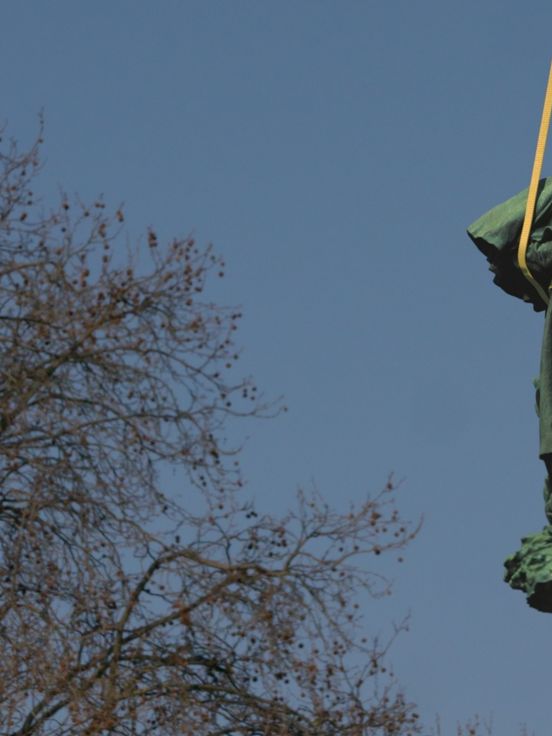Levitate (2022)
“Levitate” examines the role of monuments in European cities. Backed by striking performances, Argote investigates their function as symbols of colonial power. The film records actions he carried out in Rome, Madrid and Paris to draw attention to the violent history of historical monuments and literally to dismantle them. The work is also a vehicle for autobiographical reflections by the artist about his arrival in Europe. Argote challenges us to imagine an alternative future for the community use of space.
